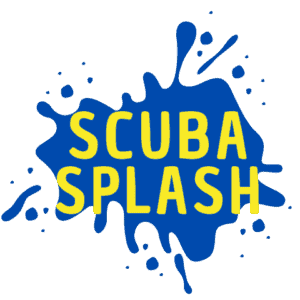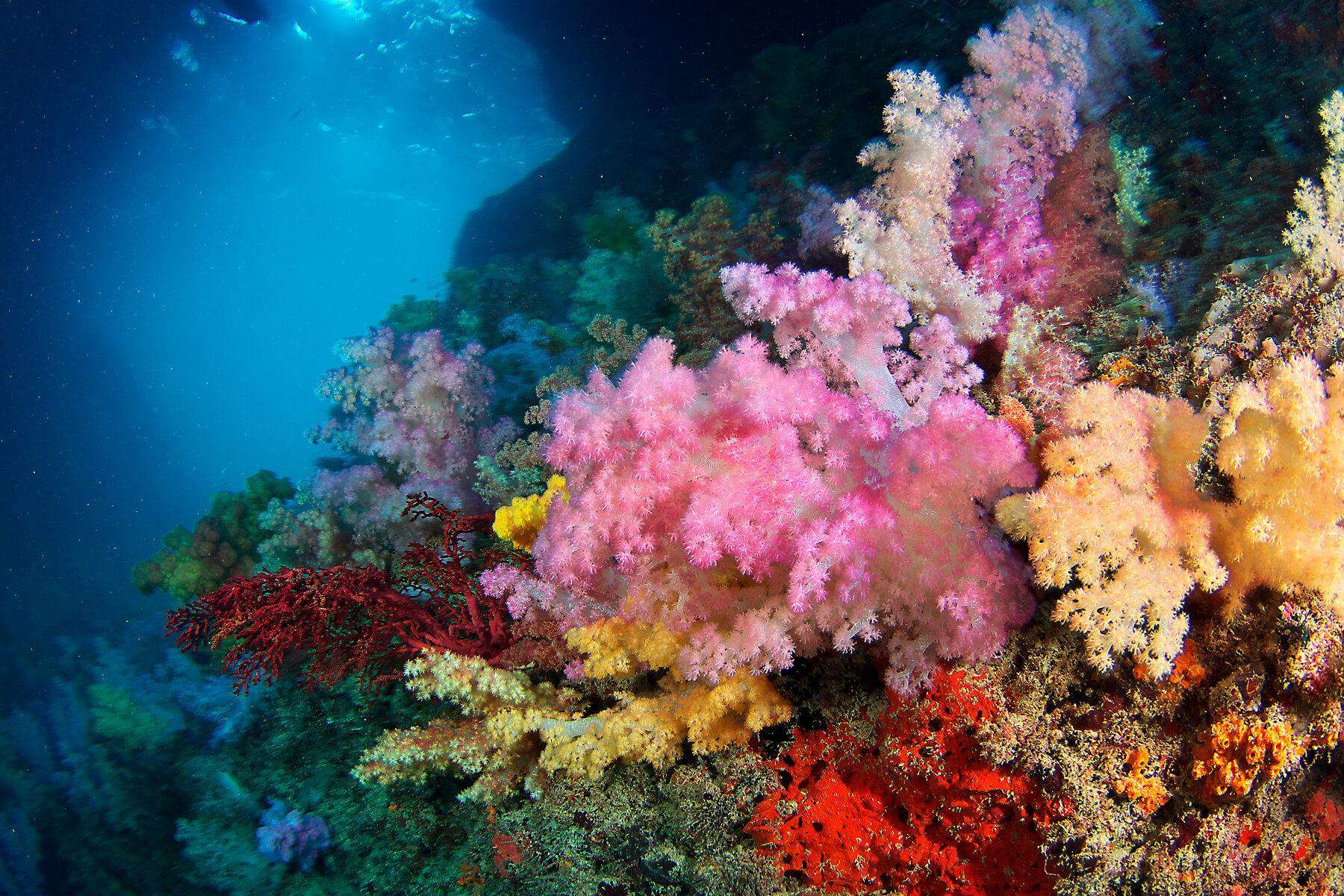The Bahamas is a paradise destination for millions of tourists each year. With 30 inhabitable islands to explore and nearly perfect weather year-round it’s no surprise. The Bahamas is an archipelago of 700 islands and has a relaxed, easy-going atmosphere.
There are so many diving destinations in the Bahamas that you can dive for months without seeing them all. The waters are warm, clear and full of coral and marine life. It’s certainly a top destination of every diver.
The Bahamas is a prime destination for scuba divers of all skill levels. It’s also a wonderful place to get certified if you have never dived before. The islands offer lots of healthy reefs, a dense population of fish, plenty of reef and nurse sharks, shipwrecks, drop-offs, and blue holes. Most people fly directly to the capital city, Nassau, and stay on the main island. These are the must-see dive sites around Nassau that will keep you busy for weeks.
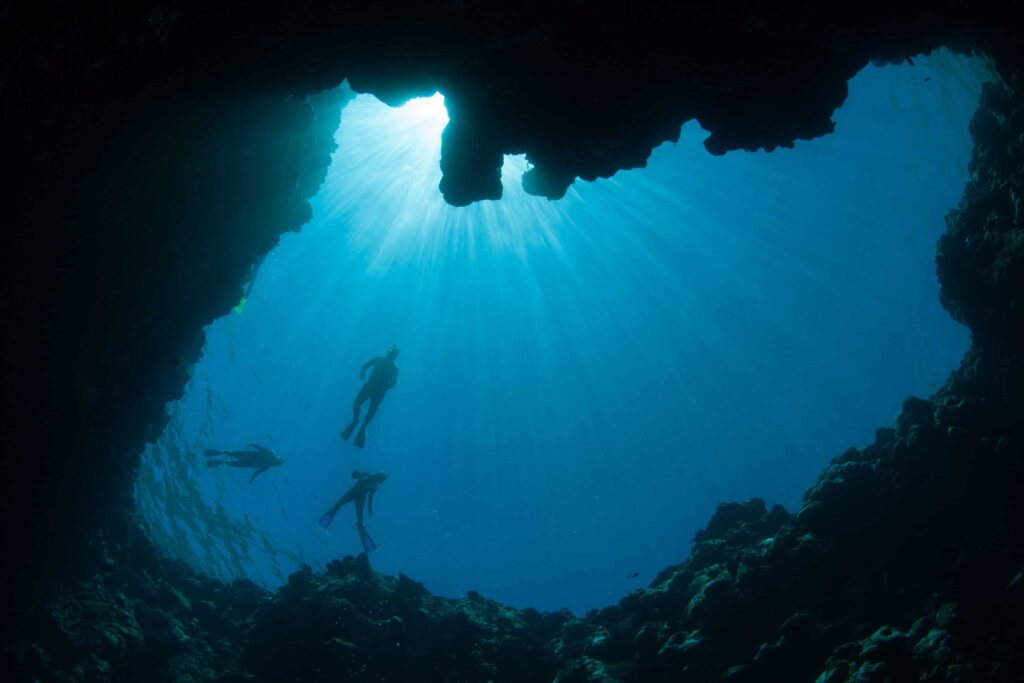
Lost Blue Hole
Marine Sinkhole
Skill Level: Beginner (with at least 5 dives logged)
Expect to See: Nurse and reef sharks, snapper, amberjacks, yellowtails, rays, turtles, eel, sea sponges, sea fans, coral
Water Temperature: 70-80 F (21-27 C)
Blue holes are marine sinkholes and they can be found in several places around the world. Each one has it’s own unique characteristics and the Lost Blue Hole in Nassau is no different.
The dimensions of the Lost Blue Hole are 100 feet (30 m) wide and 200 feet (61 m) deep. It’s a slightly intense experience but still okay for moderately beginner divers. You need to have at least 5 dives of experience to visit this site. Advanced certified divers are able to descend to deeper depths and explore more of the hole.
Divers from all over the world come to experience the Lost Blue Hole for its unique sea life and easy access. It’s located 10 miles from Nassau and right alond the coast. There is a colorful coral reef around the rim of the hole with lots to explore on both the beginning and end of the dive.
The hole is home to an array of marine life as they use the region as a shelter from larger prey. The walls of the hole are covered in sea sponges, sea fans, and soft and hard coral. The waters within the hole are calm and crystal clear.
Visibility ranges from 60-98 feet (18-30 m) but because of the nature of the hole it’s recommended to either bring or rent a flashlight.
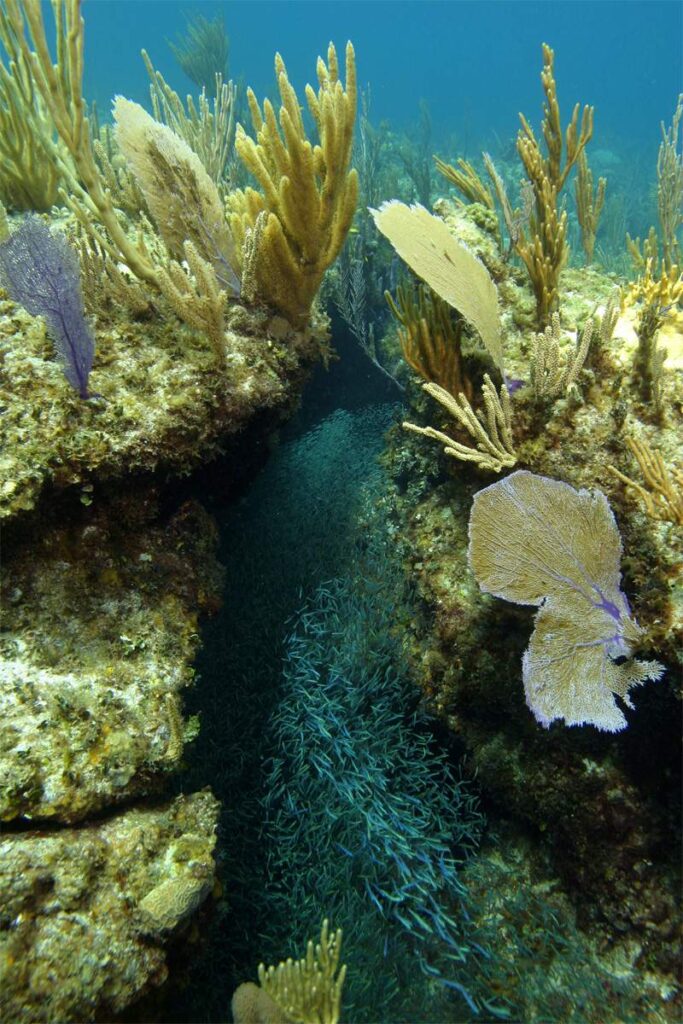
Tunnel Wall
Rugged Outcrops and Tunnels
Skill Level: Beginner and up
Expect to See: Coral, tropical fish, turtles, sharks, tunnels, wall, caves
Water Temperature: 73-85 F (23-29 C)
The Tunnel Wall site is exactly how the name suggests, a wall, and lots of tunnels. The wall begins at 30 feet (9 m) depth and drops to over 130 feet (40 m).
The terrain is rugged with rocky outcrops, hard coral, and lots of swim-through tunnels. It’s a really fun dive and a great area for photography. There are marine life here but not as saturated as other sites. The majority of marine life gather around the edge of the wall drop-off.
The main attraction is the topography, interesting tunnels, coral gardens, and wall drop-off. A fun way to brush up on buoyancy skills is by using the tunnels as guides to practice.
There are lush coral gardens filled with both soft and hard coral as well as sea fans. The waters are relatively calm and the dive is very relaxing and colorful.
The depth of this dive ranges from 39-131 feet (12-40 m) and visibility ranges from 60-98 feet (18-30 m). It’s only a 10-minute boat ride from shore and is suitable for all levels of divers.

The Bahama Mama
Shipwrecks and Sharks
Skill Level: Beginner
Expect to See: Coral, tropical fish, reef and nurse sharks, shipwreck
Water Temperature: 80-85 F (27-29 C)
The Bahama Mamma is a wreck dive and so much more. Let’s start off with the shipwreck. The Bahama Mama is a 92-foot (29 m) party ship that was intentionally sunk in January 1995. Ships that are intentionally sunk are to attract divers, create an artificial reef, and help support marine life.
The wreck lays 50 feet (15 m) below the surface and is home to a large population of reef sharks. It’s such a prime shark spot that many photographers and videographers dive here solely for this purpose.
Expect huge numbers of reef and nurse sharks in the region along with the usual tropical fish species. Reef and nurse sharks are passive and will not attack. However, it’s important to remain respectful and never force the shark into a defensive mode. Observe peacefully and calmly and remember to never quickly dart away from a shark.
60 feet (18 m) from the bow of the wreck is a reef head that is home to tons of eels including large green moray eels. Did I also mention that the Bahama Mama is at the edge of the Tongue Of The Ocean drop-off?
There is another wreck behind the Bahama Mama called the Ray Of Hope that is a 200 foot (61 m) ship. It was last registered as a Haitian freight cargo ship and was intentionally sunk in July 2003. Visibility in the area ranges from 70-80 feet (21-24 m).
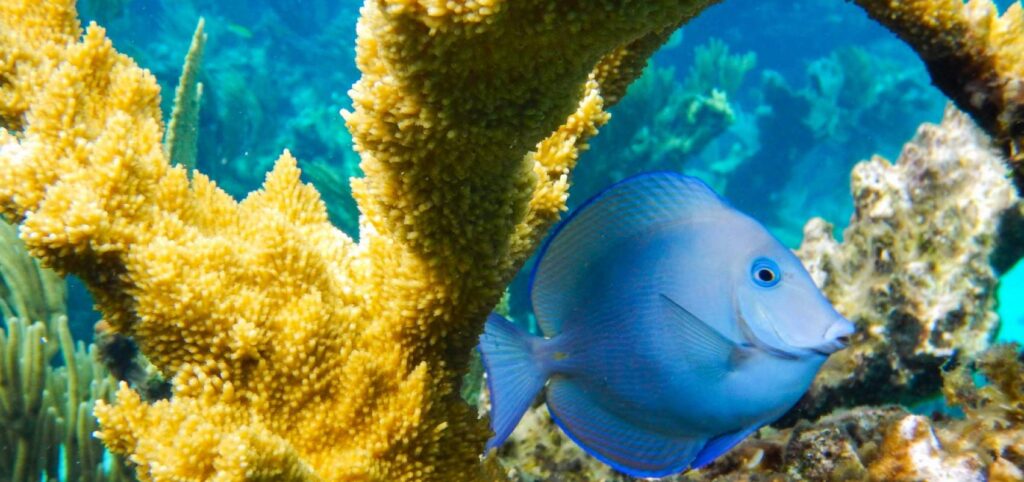
Southwest Reef
Marine Protected Reef
Skill Level: Beginner
Expect to See: Coral reef, sea fans, sea sponges, tropical fish, starfish, angelfish, parrotfish, grouper, rays, reef sharks
Water Temperature: 80 F (27 C)
The Southwest Reef dive site is a protected marine area with thriving coral. The reefs are in perfect condition with a rainbow of hard and soft coral. There are many species of coral along with sea fans and sea sponges. There is a lot of natural sunlight and it’s an amazing location for award-winning photos.
Many people liken this site to an aquarium with a huge variety of fish and coral. You might just spend the entire dive looking at 2 coral heads and trying to identify all the tiny sea creatures. The Southwest Reef is located just 6 miles (10 km) off the coast and is an easy boat ride.
Expect to see tons of grouper along with lots of species of tropical reef fish such as angelfish and butterflyfish. Starfish hang out in and along the reefs as you’re sure to spot a few. The Southwest Reef can be explored for several days without ever feeling bored.
Like just about all other dive locations in the Bahamas, you can dive this site nearly all year long. Visibility is as you might expect, amazing and at least 80-100 feet (24-30 m). The dive is relatively shallow and ranges from 10-25 feet (3-8 m). It’s a perfect place for beginners or anyone looking for a relaxing and colorful reef dive.

Runway Wall
Colorful Wall and Shark Feeding
Skill Level: Beginner
Expect to See: Coral reef, wall, tropical fish, eels, Caribbean reef sharks
Water Temperature: 75-86 F (24-30 C)
Runway Wall is a vertical wall filled with coral and tropical fish. There are also many reef sharks that roam the area. The great part about this dive is that it’s a dual adventure. The beginning of the dive starts off at Runway Wall exploring the reef and identifying fish species.
The reef wall gets its name because sharks roam back and forth to Stuart’s Cove, the second portion of the dive site. Runway contains dramatic reef walls that are full of marine life and color.
After exploring Runway Wall you swim to a sandy, open area called Stuart’s Cove or sometimes called Shark Arena. This is when your heart will begin to beat faster. Why you might ask? Well, this is when divemasters will lure Caribean reef sharks in with bait.
Caribbean reef sharks are listed as a threatened species as they are often caught and sold in Asian fish markets. They are one of only a few species of shark that can be lured by using bait. The sharks approach the bait almost immediately and are only interested in the bait. These sharks range from 5-10 feet (1.5-3 m) long and weigh up to 150 pounds (68 kg).
It’s safe and the sharks are more interested in the bait at the end of spears then they are of you. Shark feeders are highly trained and they know how to attract sharks while maintaining a safe environment for everyone.
The maximum depth is 40 feet (12 m) which means it’s open to all levels of divers. The only question is, are you brave enough?
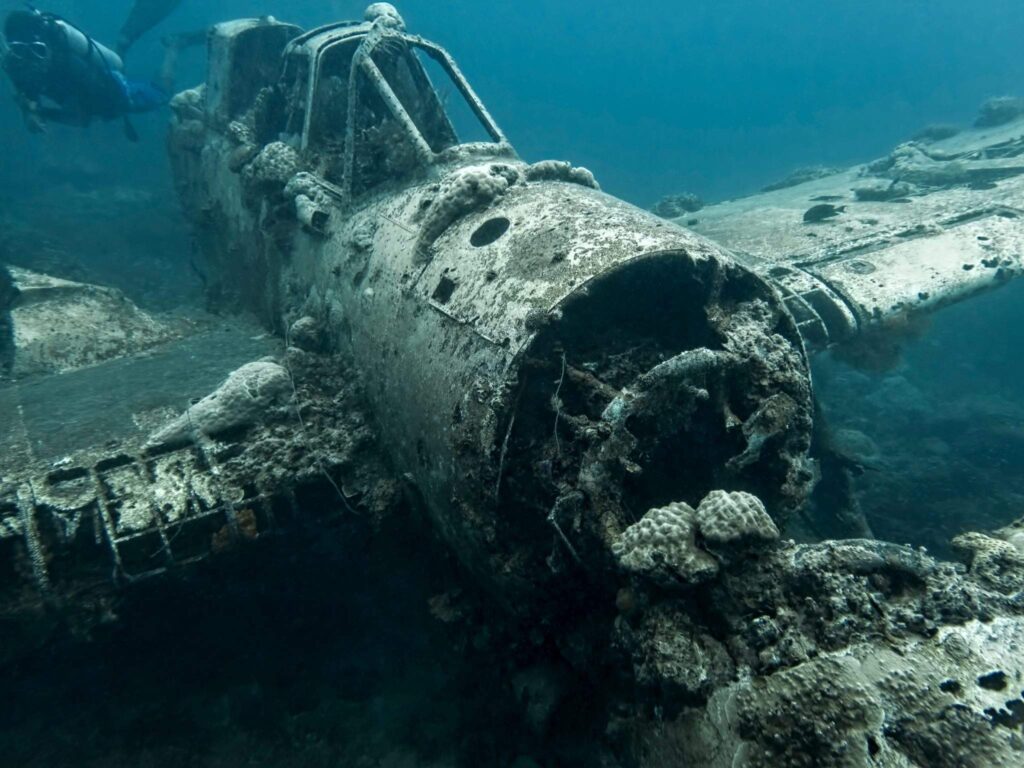
James Bond Wrecks
James Bond Wrecks
Skill Level: Beginner
Expect to See: Shipwrecks, coral, sea sponges, tropical fish, turtles, barracuda, lionfish
Water Temperature: 80 F (27 C)
There are two wrecks at the James Bond site and they are usually explored together. The first is a bomber plane mock and the second is an old tugboat. The Bahamas also offers another James Bond famous site called the Thunderball Grotto.
A Vulcan bomber plane was sunk during the 1965 film ‘Thunderball’. The plane has disintegrated a big but the frame remains. It was actually a mockup and not a real plane but fun nonetheless. I mean, James Bond was filming here in the 60s and 80s. Today, the frame sort of resembles a jungle gym
Tears of Allah is a 92-foot tugboat that formerly transported supplies around the Bahamas. It was sold to production to be sunk for the 1983 film ‘Never Say Never Again’. The boat sits upright up the ocean floor and makes for great photo opportunities. There is also a large hole in the side of the boat that is big enough to fit through. Divers are permitted to enter and do a little exploring.
Visibility here usually ranges from 50-130 feet (15-40 m) and the dive site is in relatively shallow water. This makes it great for beginners or anyone looking for an easy wreck dive.
As with all diving, be respectful and do not damage or remove anything. Fire coral is present in the area so it’s especially vital not to touch any coral.
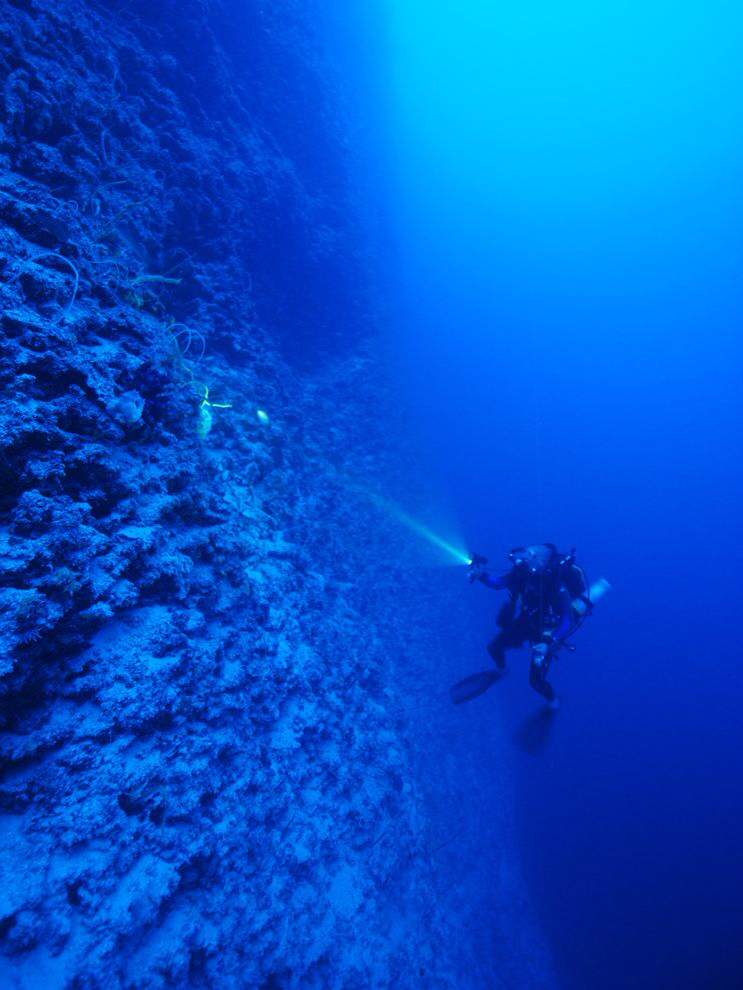
Tongue-of-the-Ocean
Ocean Trench Drop-Off
Skill Level: Beginner and up
Expect to See: Wall, drop-off, coral, tropical fish, sharks, triggerfish, rays, chimaera, jellyfish,
Water Temperature: 72-85 F (22-26 C)
Tongue Of The Ocean is a famous ocean trench that is 120 miles (193 km) long and 24 miles (39 km) wide. It’s also 1.1 miles (1.8 km) deep. The site is situated between New Providence Island and Andros Island and is accessible from both sides.
The depth and width of the Tongue mean that you will get the chance to see larger pelagic species such as sharks, rays, and chimaeras. Reef formations are found at the shallow portions of the wall and they support lots of marine life. Fire and brain coral are just two of the many coral species growing.
The water in the tongue hardly circulates with the rest of the ocean because of the limited entry points. This creates water with a very high salt percentage and allows for coral formations to flourish. You would usually expect these corals to grow in warm shallow waters but the high levels of salt and other minerals allow them to grow.
The waters are very clear because the trench actually helps to purge sand and debris. Visibility is always amazing and you can expect it to be 100 feet (30 m).
You probably won’t but, once you get past 130 feet (40 m) the waters get darker as the light is unable to penetrate that far down. The scenery changes and becomes less abundant and colorful.
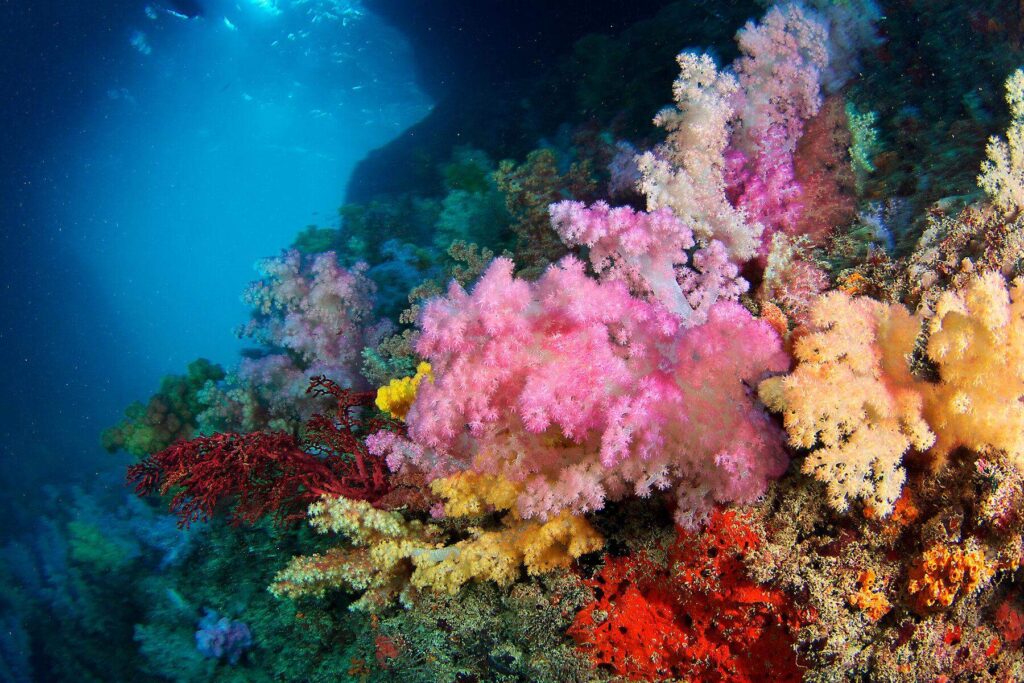
Razorback Wall
Coral Gardens
Skill Level: Beginner
Expect to See: Reef and nurse sharks, rays, turtles, lionfish, tropical fish, coral, sea sponges, sea fans
Water Temperature: 75-86 F (24-30 C)
Razorback Wall is a sharp edge reef cliff that sprouts out of the sand at the bottom of the ocean. It towers all the way up toward the surface and begins st 35 feet (11 m) depth. There are lots of vibrant coral gardens and plenty of marine life.
You can expect to see turtles and lots of fish weaving through the unique coral formations and crevices. The wall begins at 35 feet (11 m) deep and stretches all the way to the ocean floor. Which happens to be way past any range of visibility.
It’s normal to see reef sharks, lionfish, stingrays, and tons of colorful tropical fish. So many that you’ll lose count and struggle to identify them all.
The coral is very healthy and bursting with color and tropical fish. You can expect to see lots of sea fans and sea sponges in an array of colors and sizes. It’s an ideal site to practice your photography or videography skills.
The waters are warm and calm and great for all levels of divers. Visibility is amazing and always stays around 80 feet (24 m).
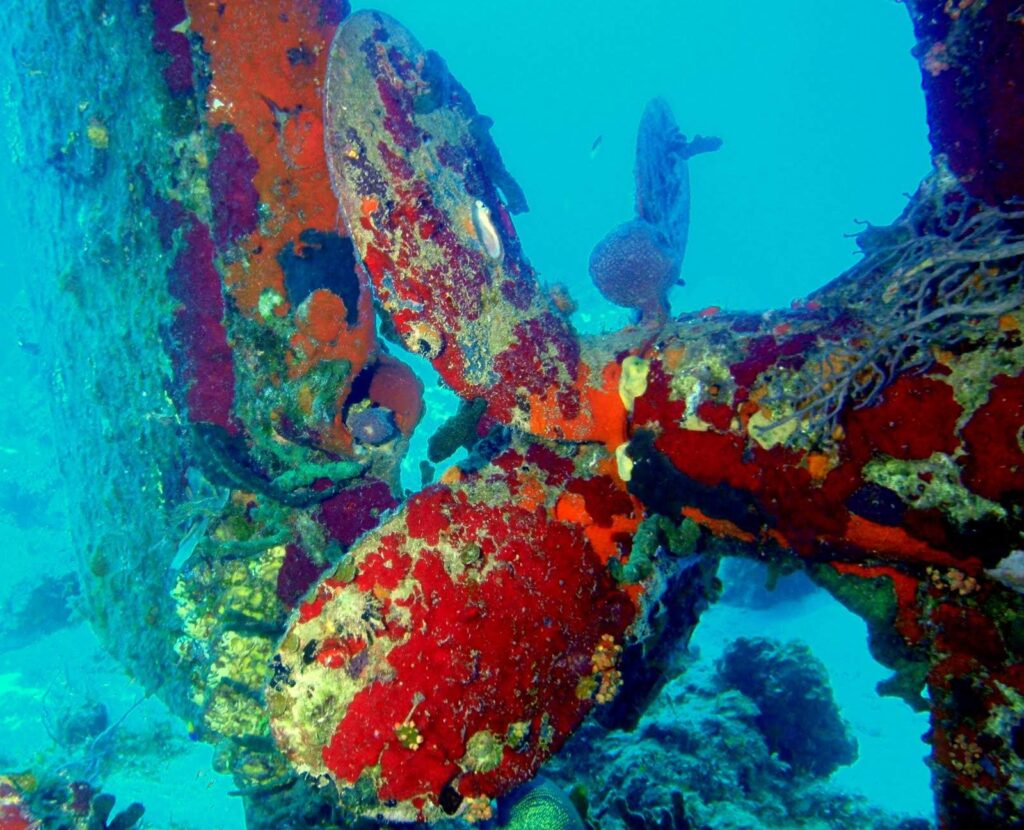
Willaurie
Shipwreck and Dense Coral
Skill Level: Beginner
Expect to See: Wreck, coral, sea sponges, turtles, octopus, trumpet fish, grouper, snapper, tropical fish, crabs
Water Temperature: 75-90 F (24-32 C)
The story of how the Willaurie sank is a tragic tale of destiny. The 130 foot (39 m) freight boat used to transport mail throughout the Bahama Islands. In 1989 the boat was being towed during a storm when the tow lines suddenly snapped.
The boat crashed into underwater fuel lines and sank. A short time later crews went back to the wreck during low tide in an attempt to re-float the ship. They were successful in their attempt but only for a short time. The repairs to the ship were not enough. The Willaurie began to take on water again and finally succumbed to her ultimate destiny.
Willaurie is a popular destination for divers in Nassau Harbour. The ship is covered in a dense growth of coral and tropical fish. Sponge and cup coral are the main species growing. The cargo hold and the propellors are in great condition and can be explored at your leisure.
A large portion of the wreck is coated in coral growth. The red, orange, yellow, gold, and pink coral makes the wreck alluring and not to mention, highly photogenic.
The dive is 60-70 feet (18-21 m) deep and visibility is about the same, 50-60 feet (15-18 m). For a twist on this site try visiting it at night. This is when you can see thousands of trumpet fish swarming the wreck and hanging upside down on the frame. For this, it’s a really popular night diving site and easy to book a visit with any local dive shop.
